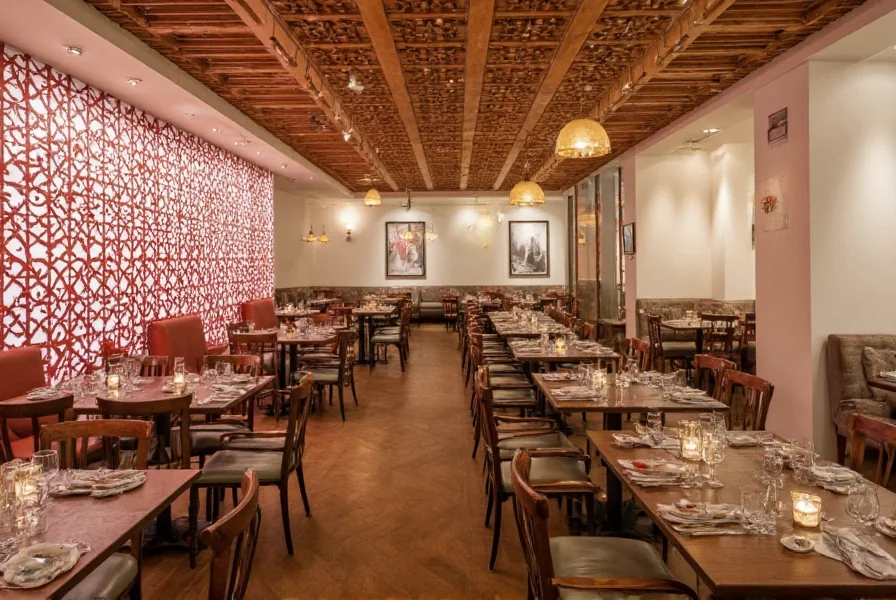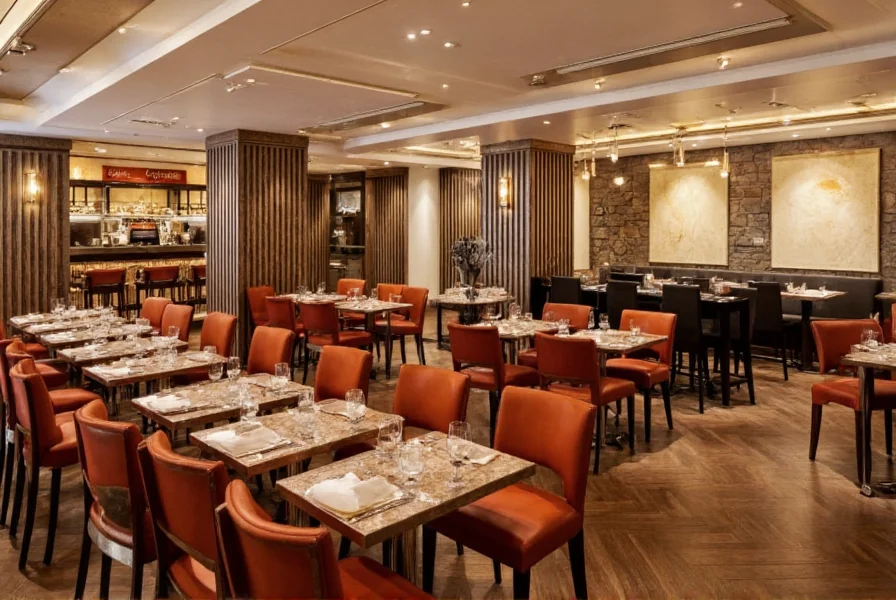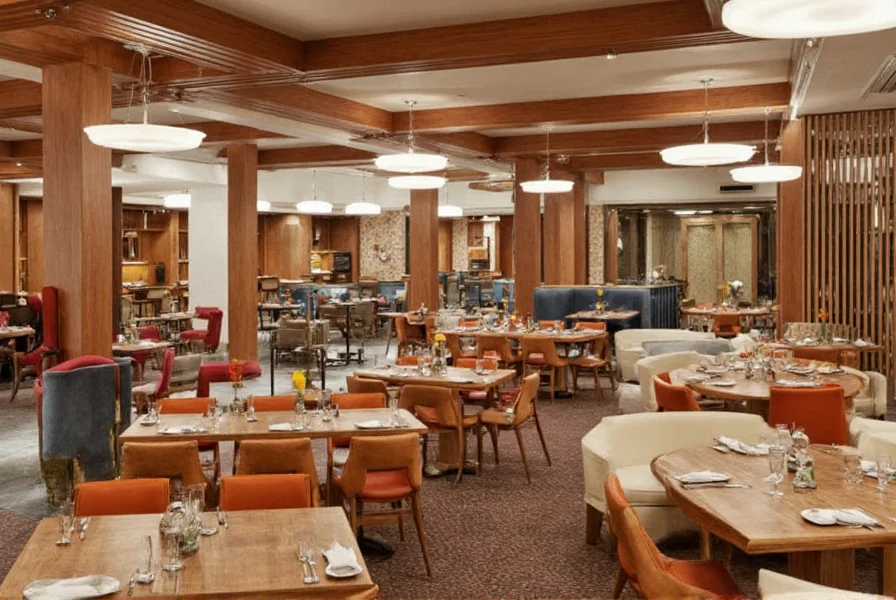Modern Indian dining has emerged as a significant culinary movement, bridging centuries-old traditions with contemporary gastronomic innovations. Saffron stands at the forefront of this evolution, demonstrating how Indian cuisine can be thoughtfully reimagined for today's sophisticated palates while preserving its cultural authenticity. The restaurant's approach reflects a global trend where chefs honor traditional recipes but present them with modern techniques, refined plating, and creative ingredient combinations that maintain respect for the cuisine's roots.
Defining Modern Indian Dining
Modern Indian dining represents more than just a restaurant concept—it's a culinary philosophy that balances innovation with tradition. Unlike traditional Indian restaurants that often maintain strict adherence to regional cooking methods, modern establishments like Saffron reinterpret classic dishes through contemporary techniques while ensuring the essential flavor profiles remain authentic. This approach makes Indian cuisine more accessible to diverse audiences without diluting its cultural significance.
Key elements that distinguish modern Indian dining include:
| Traditional Indian Dining | Modern Indian Dining |
|---|---|
| Fixed regional menus | Creative fusion across regional traditions |
| Heavy use of ghee and oil | Refined cooking techniques with balanced fats |
| Standardized plating | Artistic, contemporary presentation |
| Informal dining atmosphere | Elevated dining experience with modern ambiance |
| Focus on quantity | Emphasis on quality and ingredient integrity |
The Culinary Evolution Behind Saffron's Approach
Saffron's menu demonstrates how contemporary Indian cuisine has evolved beyond the familiar butter chicken and naan bread expectations. The restaurant's culinary team employs techniques such as sous vide cooking for meats, molecular gastronomy elements for chutneys, and precision temperature control for spice development—methods that enhance rather than mask traditional flavors.
What sets Saffron apart in the modern Indian restaurant experience is its thoughtful curation of regional specialties from across India's diverse culinary landscape. Rather than presenting a generic "Indian" menu, the establishment highlights specific dishes from lesser-known regions, educating diners about India's vast culinary diversity while maintaining approachability for those new to the cuisine.

Preserving Authenticity in Innovation
True modern Indian dining establishments like Saffron understand that innovation must serve the cuisine rather than overshadow it. The restaurant's chefs maintain authenticity through:
- Sourcing directly from Indian spice growers for premium quality ingredients
- Training in traditional cooking methods before applying modern techniques
- Collaborating with culinary historians to understand dish origins
- Seasonal menu rotations that respect traditional harvest cycles
This commitment ensures that even when presenting dishes with contemporary indian cuisine trends, the essential soul of each recipe remains intact. Diners experience familiar flavors in new contexts—perhaps a tandoori preparation with unexpected but complementary ingredients, or a classic curry with refined texture and balance.
What Diners Experience at a Modern Indian Establishment
The elevated indian dining experience at venues like Saffron extends beyond the plate. Ambiance plays a crucial role in the modern interpretation, blending contemporary design elements with traditional Indian motifs. Thoughtful lighting, curated music that mixes classical Indian instruments with modern compositions, and service that educates without overwhelming create a holistic experience.
Menu descriptions often include brief historical context for dishes, helping diners understand the cultural significance behind what they're eating. This educational component represents a key aspect of contemporary indian dining concepts—making the cuisine more accessible while honoring its rich heritage.

The Global Impact of Modern Indian Cuisine
Saffron's approach reflects a worldwide movement where Indian chefs are gaining recognition for their ability to innovate while respecting tradition. This modern indian restaurant experience has helped elevate Indian cuisine's status in the global fine dining landscape, moving it beyond the perception of being solely "ethnic" or "takeout" food.
As more diners seek authentic yet innovative culinary experiences, establishments like Saffron demonstrate how traditional cuisines can evolve without losing their identity. The restaurant's success illustrates that contemporary interpretations of classic dishes can attract new audiences to Indian cuisine while satisfying those who appreciate its traditional forms.
Looking Forward: The Future of Indian Culinary Innovation
The trajectory of modern Indian dining suggests continued refinement rather than radical departure from tradition. Future developments will likely focus on hyper-local sourcing of Indian ingredients, deeper exploration of regional specialties, and more sophisticated pairings with wines and craft beverages.
Saffron and similar establishments represent an important evolution in how Indian cuisine is perceived and experienced globally. By thoughtfully balancing innovation with tradition, these venues create dining experiences that honor the past while embracing the future of Indian gastronomy.
Frequently Asked Questions
What distinguishes modern Indian dining from traditional Indian restaurants?
Modern Indian dining establishments reinterpret traditional recipes using contemporary techniques and presentation styles while maintaining authentic flavor profiles. Unlike traditional restaurants that often adhere strictly to regional cooking methods, modern venues like Saffron innovate through refined plating, creative ingredient combinations, and elevated dining experiences without compromising the essence of Indian cuisine.
Does modern Indian cuisine sacrifice authenticity for innovation?
When executed properly, modern Indian cuisine enhances rather than diminishes authenticity. Establishments like Saffron maintain authenticity through direct sourcing of premium Indian ingredients, chef training in traditional methods before applying modern techniques, and respect for the cultural significance of each dish. The innovation serves to highlight traditional flavors in new contexts rather than replace them.
What should first-time diners expect from a modern Indian restaurant experience?
First-time diners can expect an elevated dining experience that educates while delighting the senses. Modern Indian restaurants typically offer thoughtfully curated menus with regional specialties, contemporary plating that showcases the food's visual appeal, and service staff knowledgeable about both traditional origins and modern interpretations of dishes. The ambiance usually blends contemporary design with subtle Indian elements, creating a sophisticated yet welcoming atmosphere.
How has modern Indian dining influenced global perceptions of Indian cuisine?
Modern Indian dining has significantly elevated global perceptions of Indian cuisine, moving it beyond the "ethnic" or "takeout" categorization. By presenting Indian food with refined techniques and sophisticated presentation, restaurants like Saffron have helped position Indian cuisine within the global fine dining landscape, attracting new audiences while maintaining appeal for traditional enthusiasts. This evolution has increased appreciation for India's diverse regional culinary traditions.











 浙公网安备
33010002000092号
浙公网安备
33010002000092号 浙B2-20120091-4
浙B2-20120091-4